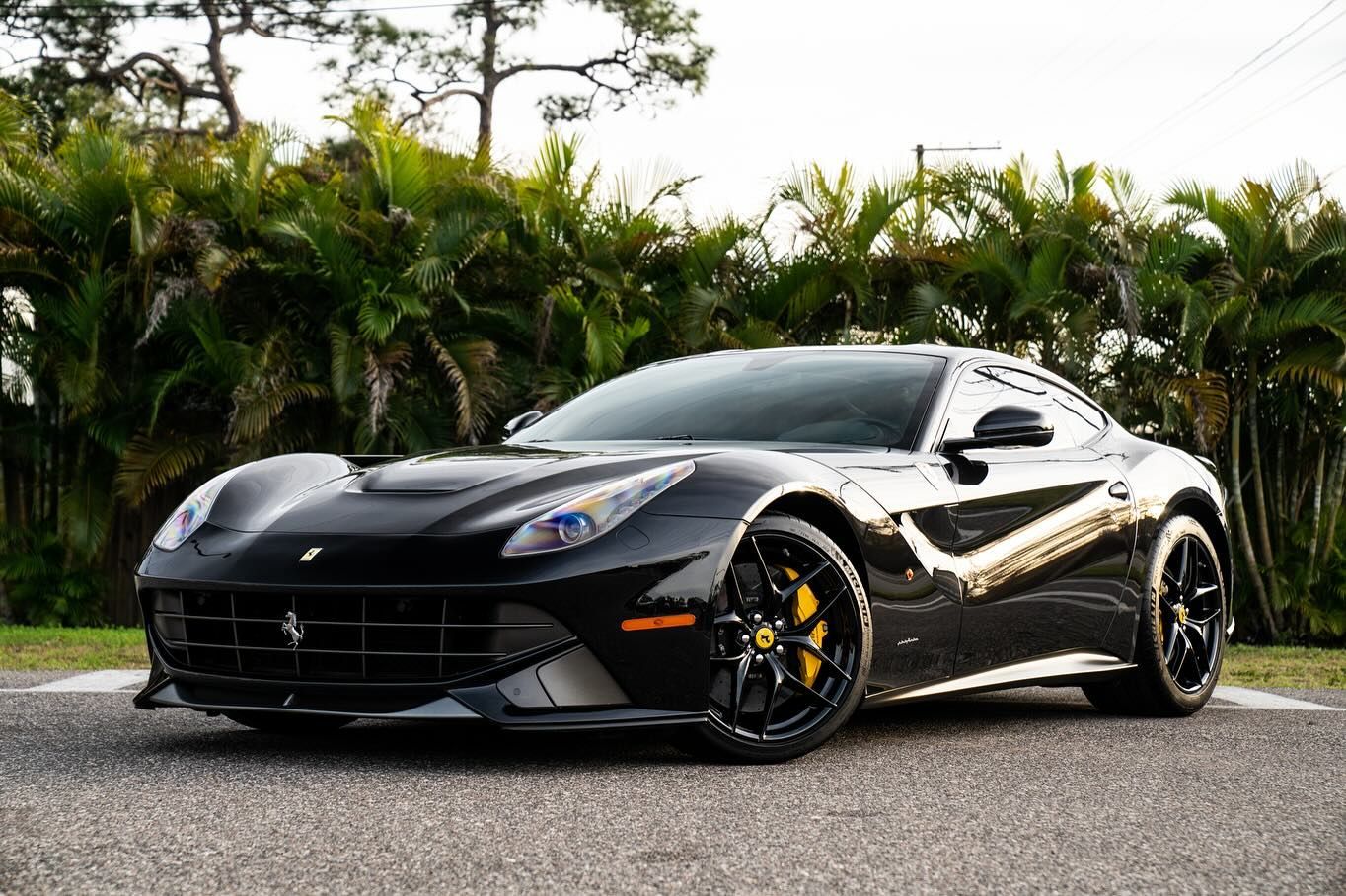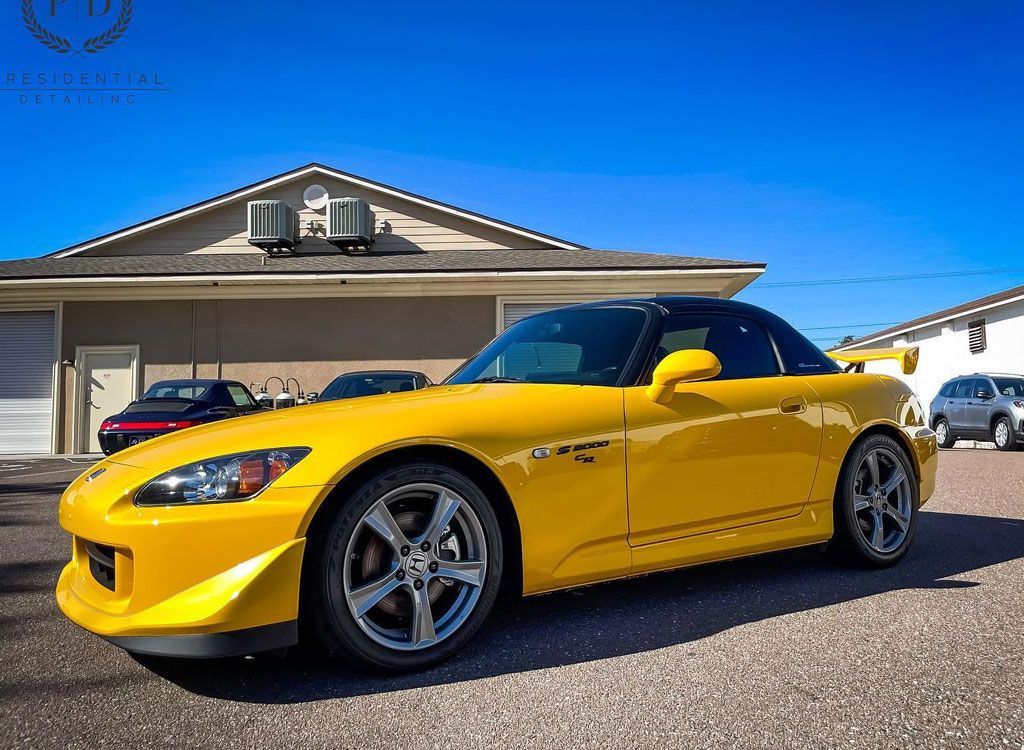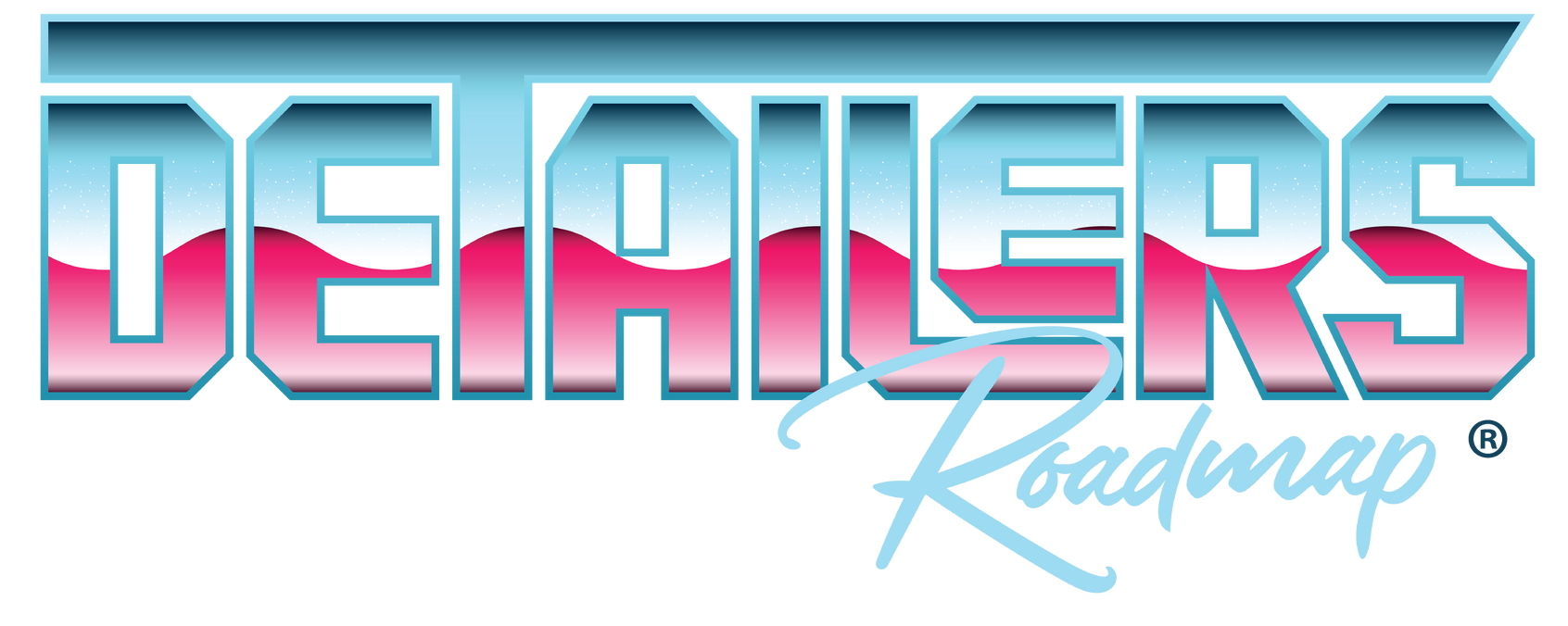Best Time of Year to Get Paint Protection Film for Your Car: Tips and Benefits
CALL (813) 723-9679
GET A FREE ESTIMATEWhen it comes to protecting your car's paint, many drivers often wonder: when’s the best time to install paint protection film? This decision might seem minor, but choosing the right season can make a big difference in adhesion and overall effectiveness. Imagine wrapping a present. If you pick a humid day or a frigid one, that wrapping isn’t going to look so great, is it? Just like that, the weather plays a crucial role in ensuring your paint protection film adheres perfectly and lasts longer. So, if you want to keep your car looking sharp while shielding it from the elements, it’s worth taking the time to consider when to get that film applied. Let’s dive deeper into the ideal seasons for applying paint protection film and explore how each one can impact the process.
The best time of year to get paint protection film for your car is during mild weather months, typically spring or fall, when temperatures are not too hot or cold. This ensures optimal adhesion and curing of the film, providing superior protection against environmental elements and potential damage.
Ideal Seasons for Applying Paint Protection Film
Spring shines as the premier season to apply paint protection film (PPF). During this time, temperatures hover between 60°F to 75°F, providing a perfect climate for the adhesive to adhere well and cure properly. Unlike the sweltering heat of summer that can accelerate the curing process too quickly or the frigid temperatures of winter that hinder proper adhesion, spring offers a more forgiving environment. This means you have a greater chance of achieving that flawless finish without worrying about premature bubbling or peeling. With the gentle warmth enveloping your vehicle, it’s like wrapping your car in a soft embrace, ensuring a secure bond between the film and the paint.
Moving on to autumn—a close second to spring. This season is particularly advantageous because there's a marked reduction in pesky environmental contaminants like pollen and dust that can cling to your vehicle’s surface. When applying PPF in the crisp fall air, you're less likely to find unwanted particles trapped under your protective layer, which can severely affect its appearance and performance. Plus, as leaves start falling, you’re preparing your car for winter ahead of time rather than playing catch-up once harsh weather hits. Just like nurturing a garden before frost can damage tender blooms, tending to your car’s exterior during autumn ensures it’s fully prepared for the rigors of winter road salt and grime.
However, winter often carries a reputation for being the least favorable option for PPF application due to cold temperatures dropping below 50°F. These conditions can impair adhesion and elevate risks during installation. The cold packs an extra punch by impacting your car's surface temperature, making it less ideal for working with adhesive materials. Still, there are niche opportunities during milder winter days when it warms just enough—it’s best to choose a day when you feel comfortable outside. Think of it as finding that rare warm spell in an icy landscape; while the odds may be against you, they aren’t entirely impossible if you're vigilant.
Summer doesn’t necessarily hold many advantages for PPF application. High temperatures often exceeding 80°F lead to adhesives curing too rapidly; therefore, critical stages of application may miss their mark causing adhesion problems down the line. That said, some professionals recommend summer use when applying ceramic coatings instead—offering hydrophobic properties that help repel water from accumulating on paintwork. Understanding how each season affects adhesion and environmental factors lets you make informed decisions about protecting your investment. As we explore specific benefits related to cooler months ahead, consider how conditions play a role in achieving optimal results.
Winter Advantages for Film Application
Winter might not intuitively seem like the best time for applying Paint Protection Film (PPF), but it offers distinct advantages worth considering. One of the primary benefits during this chilly season is the reduction in ultraviolet (UV) exposure. With harsher weather, particularly snow and cloudy days, cars are less exposed to direct sunlight, effectively decreasing the risk of UV-related film degradation as it cures. This can prove particularly beneficial right after application, ensuring that the PPF maintains its integrity and performs optimally over time.
Reduced UV Exposure
Furthermore, the winter months can facilitate a more controlled environment for installation. While cold temperatures may pose challenges, having a heated space like a garage minimizes potential issues during application. A controlled indoor environment helps stabilize the adhesive properties of the film, promoting better adherence to the surface. Many professional installers recommend ensuring that both the film and vehicle surfaces are warmed adequately prior to installation. This practice enhances bonding and significantly contributes to the overall longevity of your paint protection solution.
Many professionals note that installing PPF in stable indoor conditions allows for more precise application techniques and fewer distractions compared to outdoor installations where weather conditions can vary. If you're considering applying PPF in winter, check if your installer provides options for temperature-controlled spaces, which can make a substantial difference in quality. Another advantage tied to winter is the potential cost savings. Professional PPF installers often have lower demand during this season, which can lead to discounts or promotional offers. By capitalizing on these financial incentives during winter months, car owners can save considerably while protecting their vehicles.
Additionally, using PPF during winter safeguards your vehicle against road salt and moisture—two main culprits behind paint corrosion. By applying PPF before facing harsh winter driving conditions, you're adding an extra layer of protection that will help keep your paint job looking pristine throughout the season. With these advantages in mind, let's explore how warm weather conditions might impact your choice for protection with PPF; understanding these factors can further enhance your decision-making process.
Summer Considerations for Film Installation
The rising temperatures and increased humidity during summer can significantly affect the application of Paint Protection Film (PPF). On one hand, the heat makes the film more pliable, aiding the installation process and allowing it to conform to the curves and contours of your vehicle with ease. However, high temperatures also carry risks. The adhesive used in PPF can over-cure in an overly hot environment, leading to unwanted bubbles and surface imperfections. Such imperfections not only diminish aesthetic appeal but could compromise the effectiveness of the film itself.
Heat and Humidity Impact
When considering PPF installation during summer, ensure you find a shaded or temperature-controlled environment. A garage with proper ventilation is ideal since it allows for better temperature regulation while protecting against direct sunlight. Installing under these conditions fosters a favorable bonding process between the film and your vehicle surface, helping prevent long-term issues from improper installation.
A common best practice among professionals is to monitor temperature and humidity levels before application—ideally aiming for a humidity range between 40% to 60%. As summer rolls on, another factor comes into play: those long daylight hours. Some may argue this extended daylight offers flexibility for scheduling installations, allowing you to choose timing easily around outdoor activities. However, while longer daylight does provide more time to work with, many contend that the risk of overheating due to extended exposure is too great. It’s a delicate balancing act; optimal conditions should always take precedence over convenience.
Post-Installation Care
Regardless of the season, maintaining the film is key to ensuring it lasts long and performs well. Ensuring proper post-installation care is critical, especially in summer. After applying PPF, it's advisable to let it cure undisturbed for at least 24 to 48 hours. During this period, avoid exposing your vehicle to direct sunlight or moisture as much as possible. Be mindful of common summer contaminants such as tree sap or bird droppings posing threats to your fresh installation, causing unnecessary wear and tear.
Regular cleaning will help protect your investment—keeping it pristine while maximizing its life expectancy. With all these considerations taken into account, you're prepared for successful installation. As we explore further into vehicle upkeep techniques, understanding how seasonal changes affect your car can enhance your overall maintenance strategy.
Seasonal Maintenance Tips
Each season presents unique challenges for maintaining your Paint Protection Film (PPF), and understanding these can make a big difference in how well it performs over time. For example, winter can be brutal with all the salt and grime on the roads. If you frequent areas where they spread salt, regular washing becomes essential. Salt is an enemy to PPF; it can eat away at even the best layers if not removed. So, make it a habit to wash your car often during this time, using gentle, pH-neutral soap to protect that film from erosion.
The same principle applies to summer months when UV rays beat down fiercely. Applying a UV protectant spray monthly will not only guard against radiation damage but also help keep your PPF flexible. This means no hardening or cracking of your film prematurely, allowing it to do its job effectively. Think of it as sunscreen for your car – you wouldn’t skip applying sunscreen on yourself in sweltering heat, right?
It’s important to tailor your maintenance routine according to the seasons:
- Spring: With flora bursting back to life, make sure to rinse frequently to remove pollen that can settle onto your car's surface.
- Autumn: It’s crucial during this time to promptly remove fallen leaves and sap; they can cling stubbornly, causing discoloration if left unchecked.
- Winter: Use specific de-icing fluids designed to be safe for PPF. Standard de-icers can harm the film and ruin its integrity.
By staying proactive with these seasonal care routines, you’ll bolster the protective capabilities of your PPF and ensure it keeps your vehicle looking pristine through every season. Understanding these seasonal impacts can set the stage for a deeper examination of expenses associated with these protective treatments across different times of the year.
Cost-Benefit Analysis by Season
The costs and benefits of installing PPF can fluctuate significantly with the seasons, impacting both your wallet and the longevity of the film itself. In spring, many car care businesses often experience a lull following winter months. This slow demand can translate into better pricing. You can commonly find installers eager to fill their schedules, leading to attractive discounts and deals that might not be available in peak seasons like summer. Many users have reported savings of 10-15% or more when opting for installation in spring rather than waiting until summer hits.
However, summer brings high demand, which can inadvertently affect quality. As businesses become busier, there’s a risk they may compromise on thoroughness to keep up with customer flow; hasty installations could lead to bubbles forming or corners being cut. Feedback from users has indicated that those who opted for PPF installation during these chaotic months sometimes encountered issues that wouldn’t have arisen if they had chosen an off-peak time.
Autumn vs. Winter
Moving into autumn, this season presents another unique scenario. While parks may be laden with fallen leaves, it’s also a prime opportunity for PPF installation before the winter storms roll in. Autumn is typically quieter than summer, allowing for a focused and careful installation process. Furthermore, autumn's moderate temperatures create optimal conditions for applying PPF without the risk of harsh winter elements causing complications.
In contrast, winter installations can pose challenges. Cold weather often requires installers to have indoor spaces or controlled environments to apply PPF properly, which can escalate costs due to heating requirements or additional labor charges. Additionally, road salt and grime prevalent during winter can damage newly applied films if installed outdoors in less-than-ideal conditions. Having covered cost-effectiveness tied to seasonal variations, it’s equally important now to discuss ways to ensure the effectiveness and aesthetic appeal of your PPF throughout its lifespan—regardless of when it was installed.
Maximizing Film Longevity
To get the most out of your paint protection film (PPF), you need to pay attention to two major factors: ensuring quality installation and committing to regular maintenance. Both elements play a significant role in how long the film will last and how well it will protect your vehicle's surface.
Install Quality
First and foremost, having your PPF installed correctly is critical. This means choosing a certified professional who uses high-quality films. When you cut corners by opting for cheaper materials or less experienced installers, you're risking not only the durability of the film but your investment overall. Inferior products often start to peel, yellow, or lose adhesion much sooner than their premium counterparts. Certified installers are your best bet; they usually offer warranties that guarantee their work for up to 7 years. Knowing that you have this safety net provides valuable peace of mind.
Routine Care
Once the film is in place, routine care becomes essential. Regular washing of the vehicle helps remove dirt and contaminants that can degrade the film's integrity over time. It's important to use gentle cleaners suitable for PPF—harsh chemicals can strip away its protective qualities. Additionally, applying protective sprays specifically designed for PPF extends both its appearance and functionality significantly.
Therefore, investing time into proper installation and consistent care will not only enhance the aesthetic appeal of your vehicle but also ensure that your paint protection film serves you well over many miles. In summary, embracing quality installation and regular maintenance not only safeguards your vehicle's exterior but also keeps it looking brand new for years to come.
Top Paint Protection Film in Tampa, FL
Protect your vehicle with Presidential Automotive Detailing's expert paint protection film services in Tampa, FL. Our high-quality film acts as a shield, guarding your car’s paint from scratches, chips, and environmental damage. Whether it’s daily wear or road debris, our precise installation ensures your vehicle stays looking pristine. Don’t wait for the damage to happen—contact us today and give your car the protection it deserves!
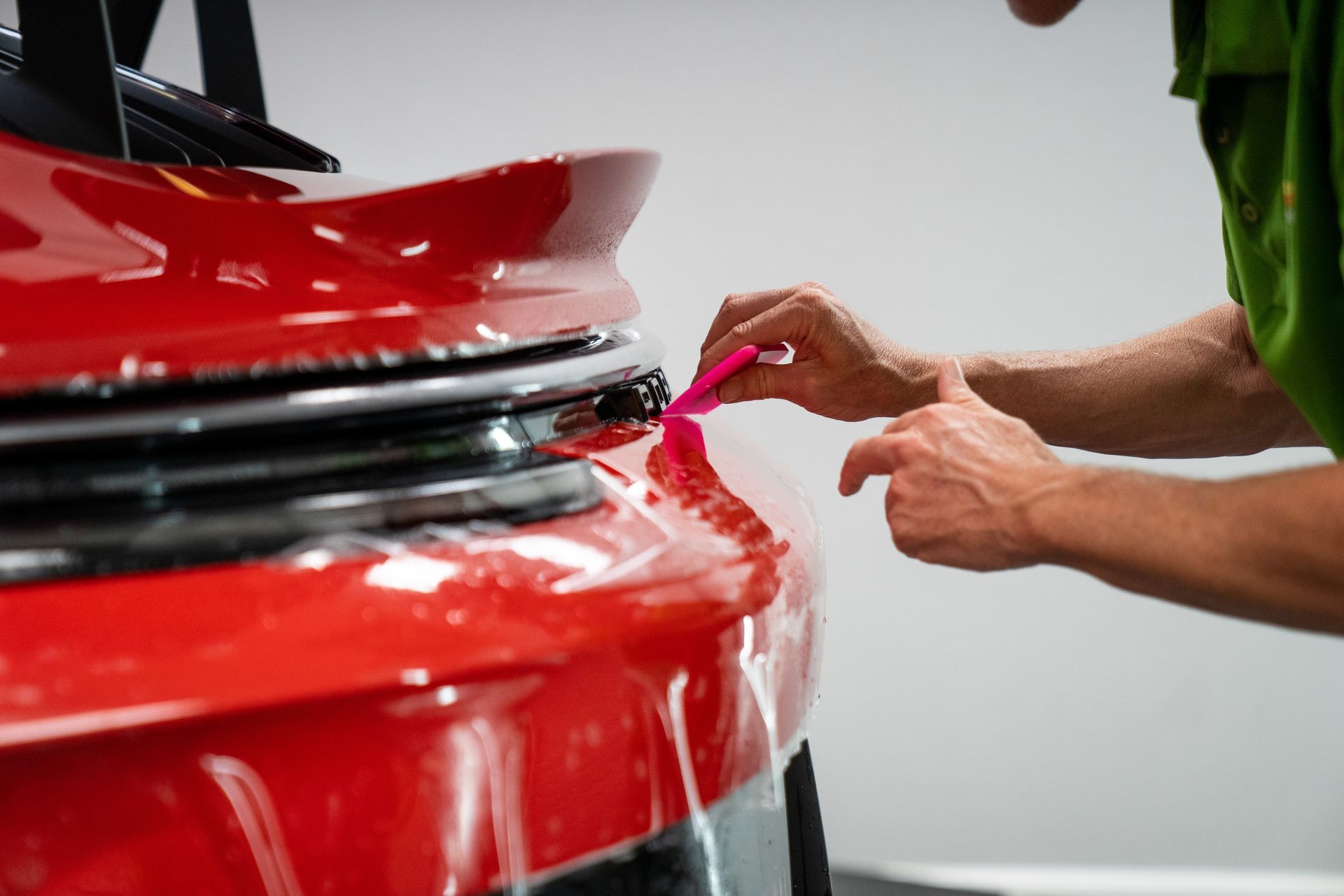

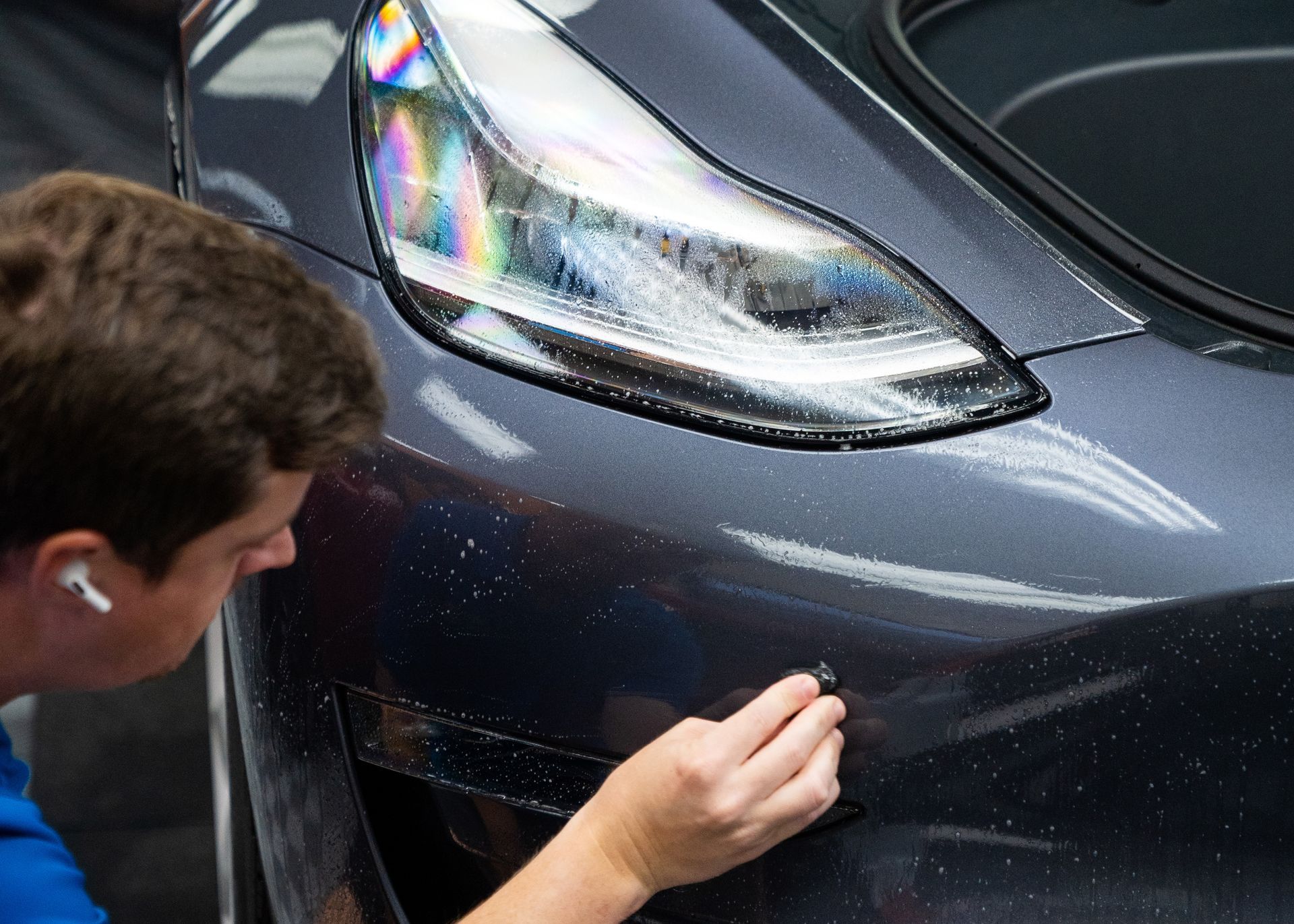
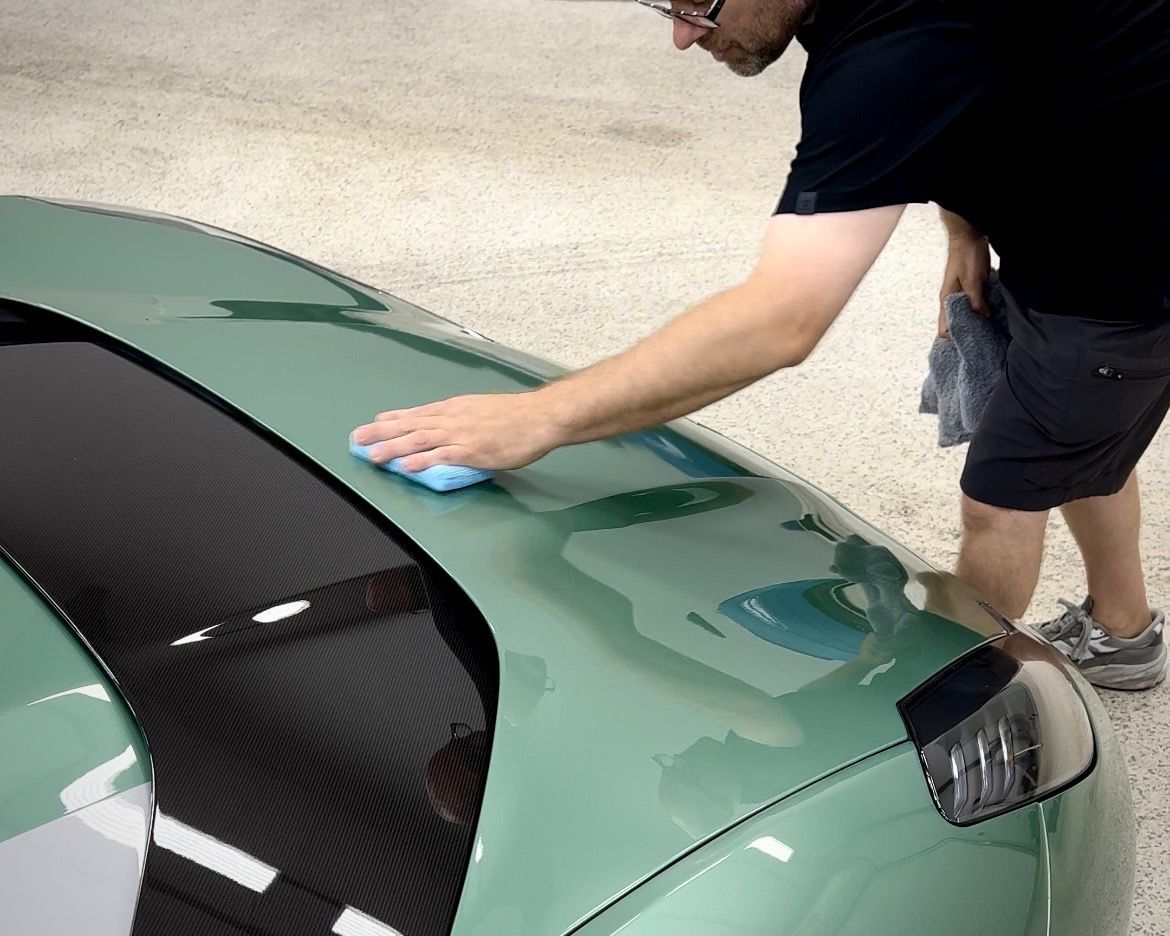

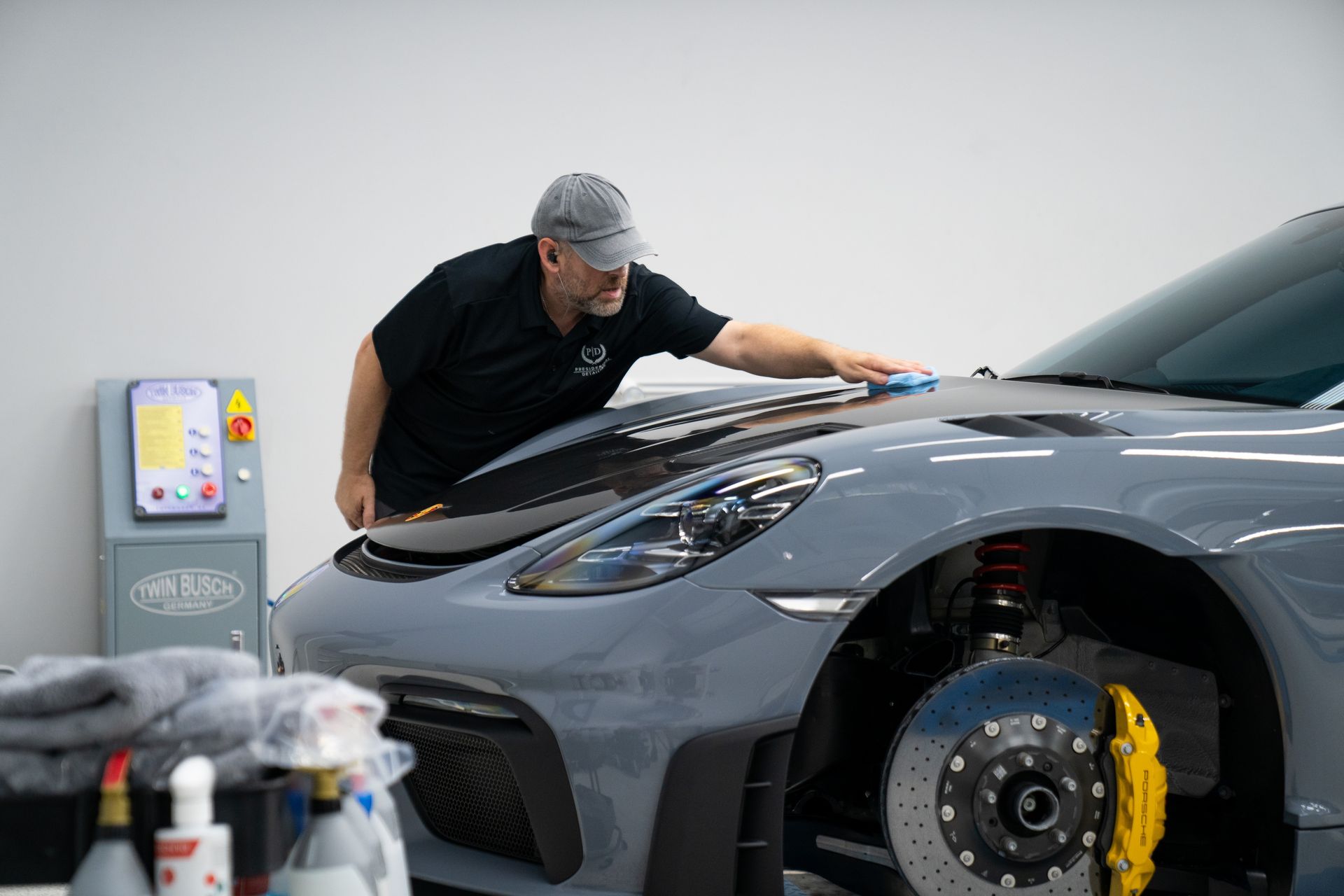
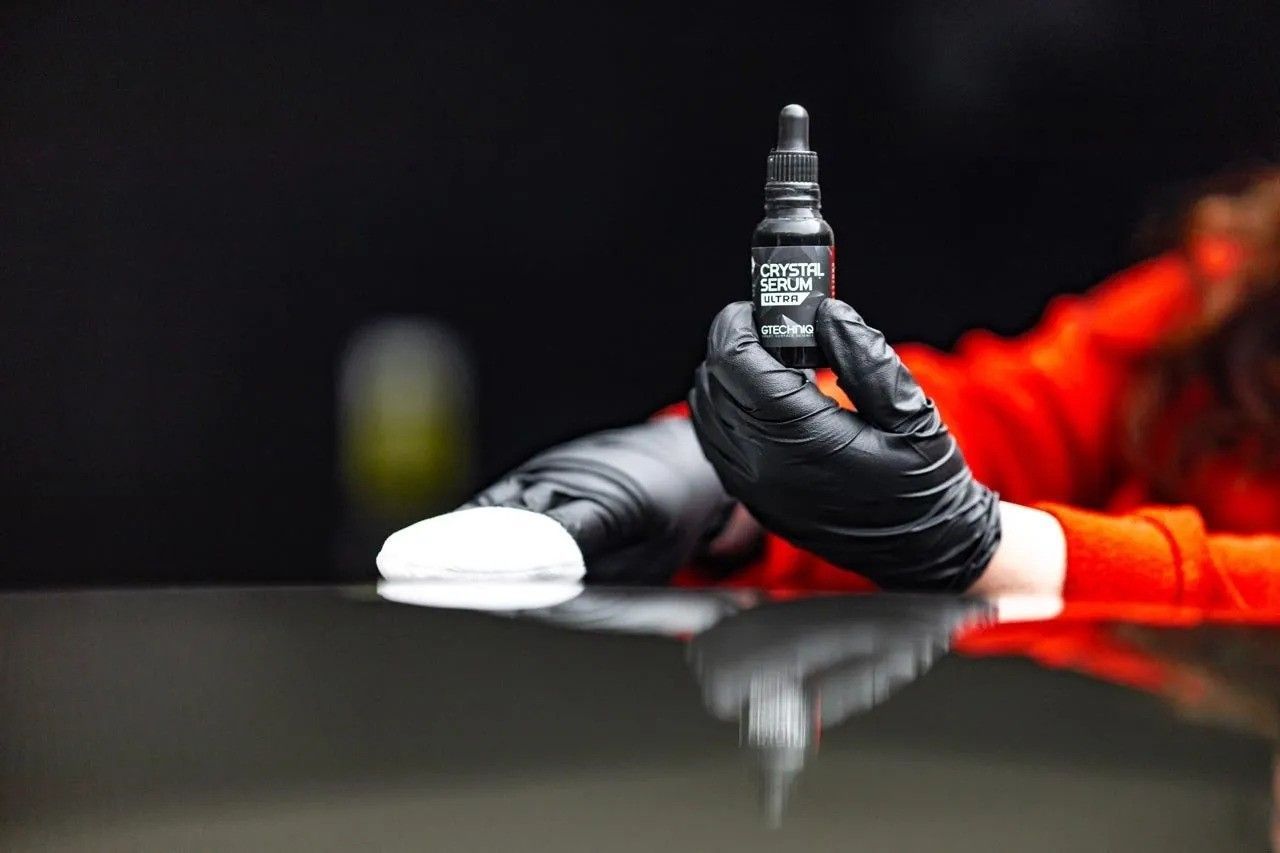
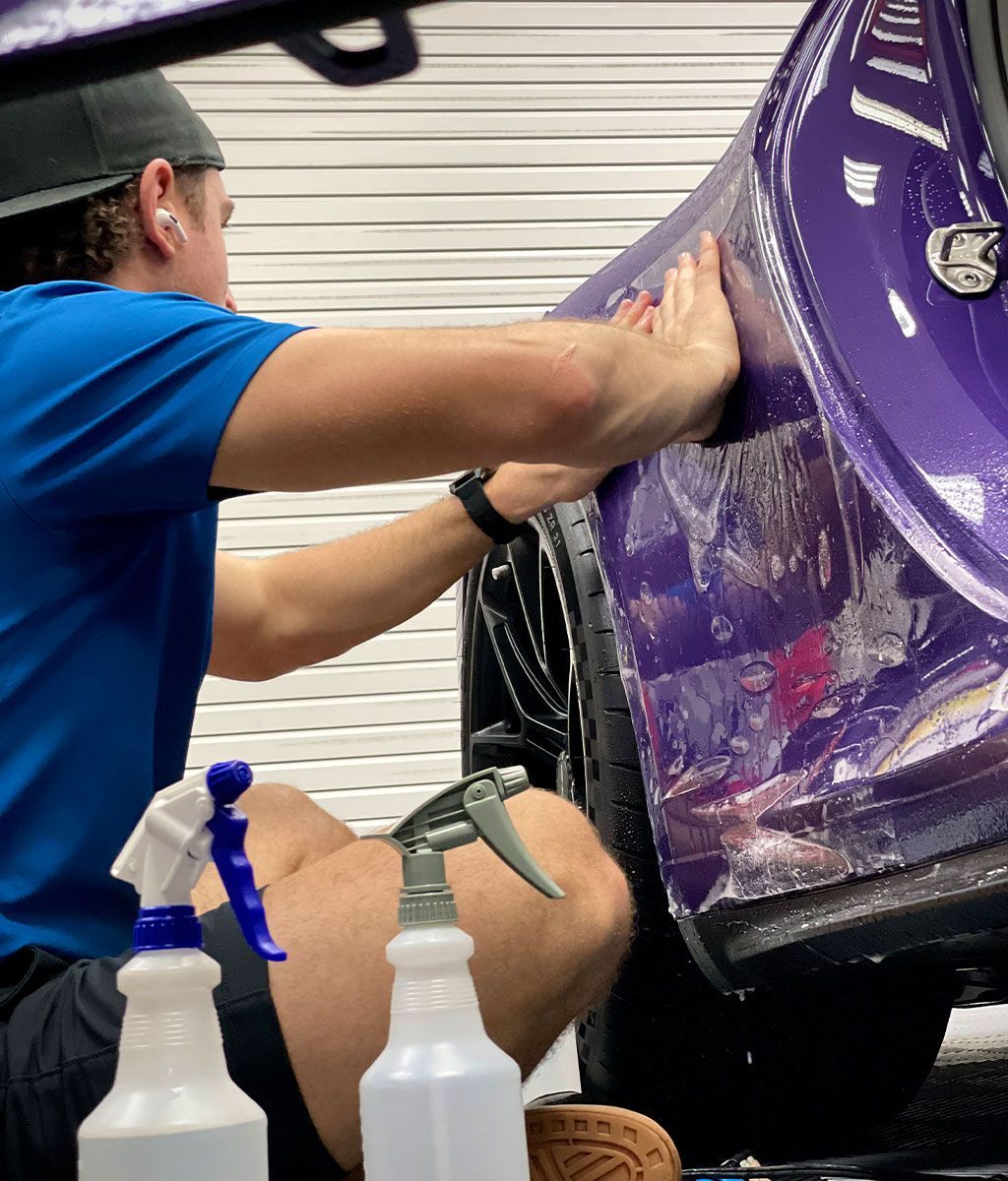
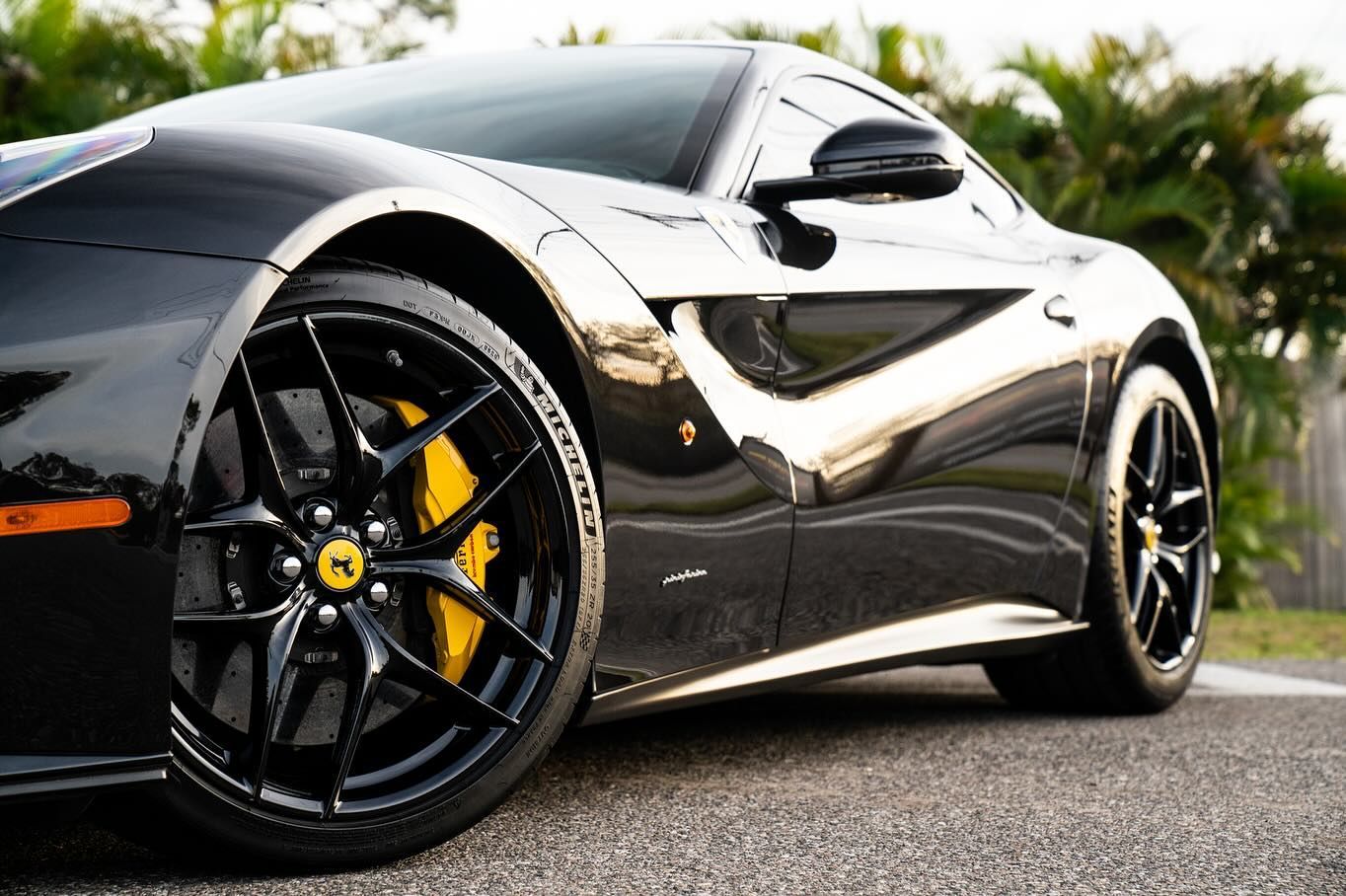
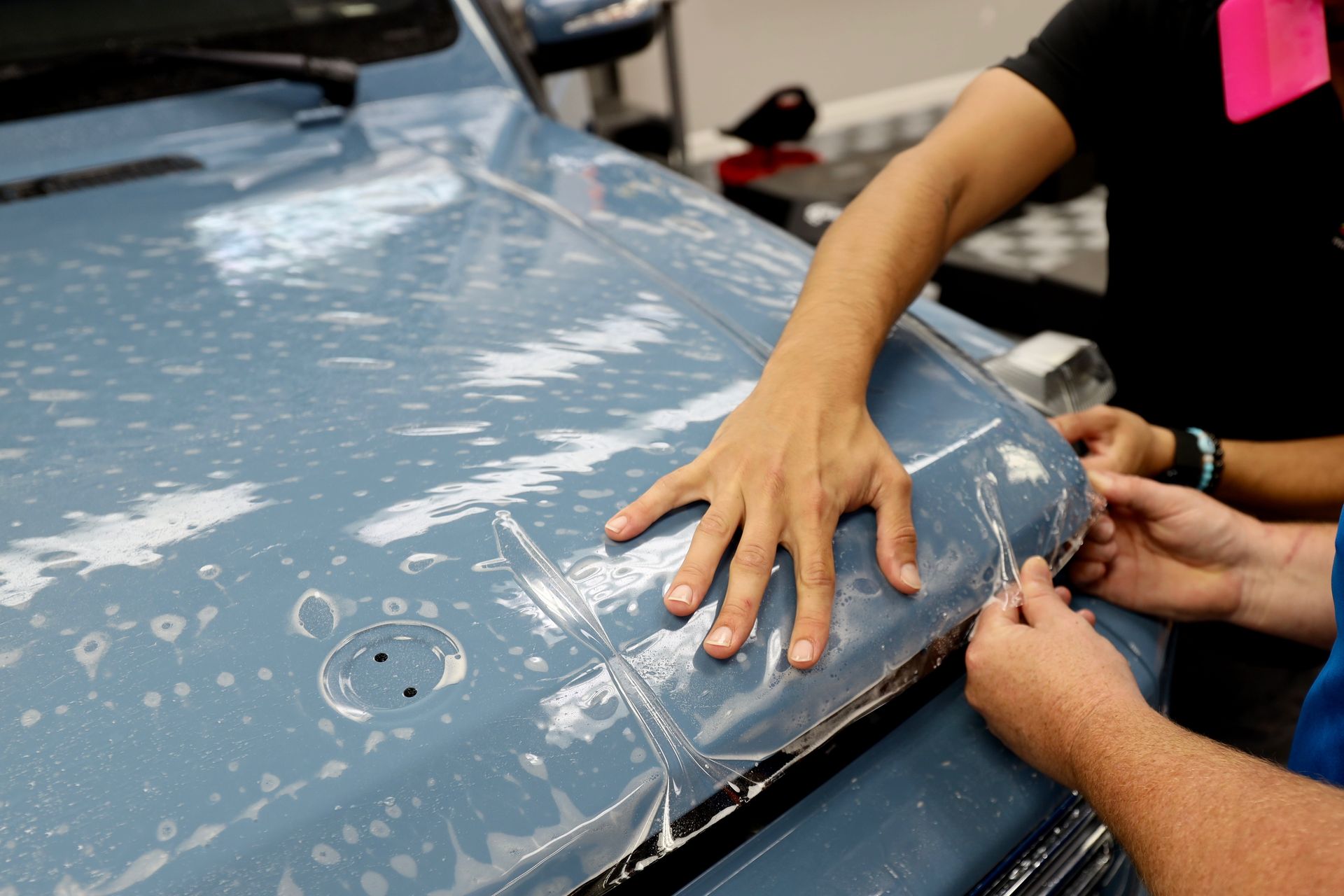
About Presidential Automotive Detailing
Founded In 2007, Presidential Automotive Detailing was created by Billy Aylward of Tampa, FL. From its conception, Billy desired to be the Tampa Bay and surrounding area’s leader in high-end detailing and paint correction services. Over the years, the market evolved and ceramic coatings and paint protection film technology advanced, adding even more durable paint protection options for our clients, which we naturally desired to become the leader in these categories as well.
Presidential Detailing is an exceptional automotive paint and surface protection shop located in the Tampa, Florida area. Born out of a small home garage and quickly expanding to be the area’s leading certified Gtechniq and XPEL product installation team, we established the local standard for installing ceramic coating formulas, PPF products, and window tint film packages on a variety of makes and models. In addition to those protection and enhancement packages, we also have a premier paint correction and polishing process to put the shine back in your vehicle’s finish, whether new or old!
Our Services
ADDITIONAL Service Areas
Designed by the team at Detailers Roadmap, a platform developed for detailing operators across the globe.
All Rights Reserved | 8bitcreative, LLC | Presidential Automotive Detailing

